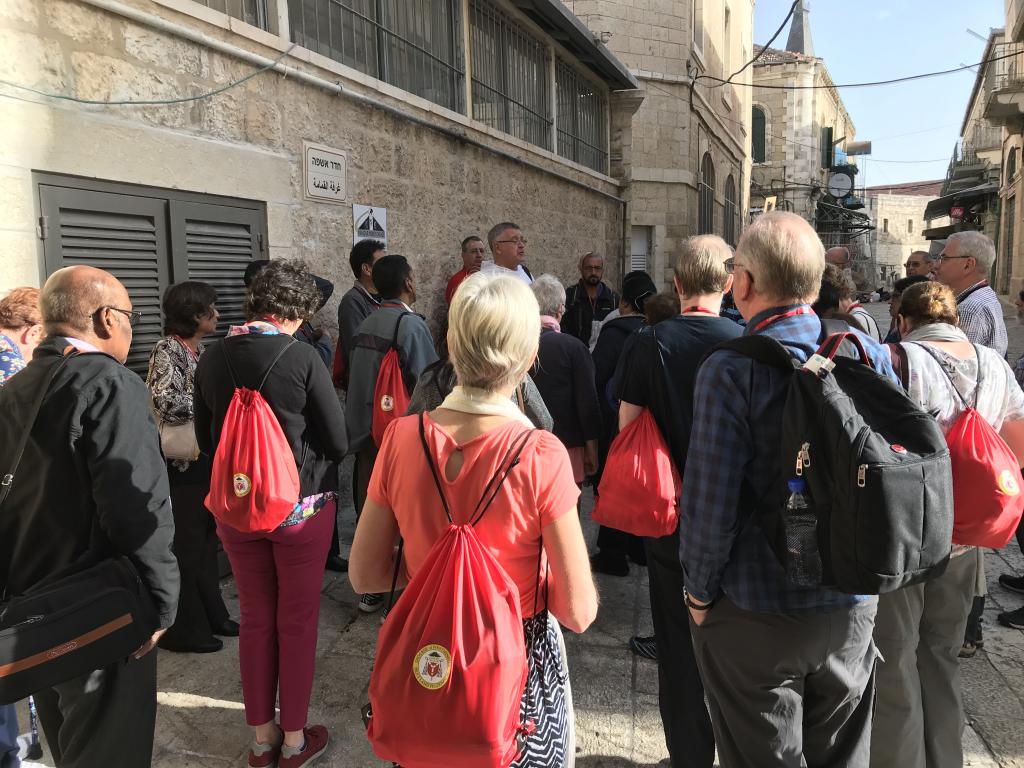Sr Petronia reflects on the Via Dolorosa:
How has this pilgrimage helped me to become closer to the Lord? There are two ways of looking at it. Do I go back in time and place myself in the situation 2000 years ago? Do I try to imagine his way of the cross and his death on Calvary, the crowds enjoying the spectacle, others bewildered at it and their loss of hope in what they thought might have been? The Pharisees, Sadducees and Sanhedrin, the Romans and the Samaritans and Gentiles of Jesus’ time are the Armenians, Greeks, Copts, Catholics and Jews, Muslims and Israelis and Palestinians of today. So the alternative is to place myself in the here and now.
Is the Via Dolorosa the visit to the different quarters of a divided city that has no integration or exchange? Who is Jesus on the road to Calvary today? Who is being crucified today? Who are those enjoying the spectacle and who are those bewildered in their loss of hope in what they thought might have been?
What about the journey to Calvary that takes place at home for those we meet from day to day? What do we do to build bridges and reach out to help carry their crosses? Does it begin with a smile or a gesture of connection?
To go back to the original question at the beginning, how has this pilgrimage helped me to come closer to the Lord? The honest answer is I don’t know yet. What I do know is that Jesus is on his road to Calvary in all those hopes and dreams that are dashed with broken promises. He is on his way to Calvary when we forget about compassion, refuse to put ourselves in their shoes; and he dies on Calvary when we ignore or are indifferent or even enjoying the spectacle.




